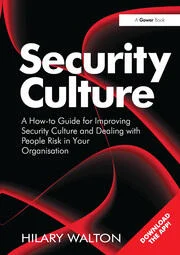Quelling Coronavirus Fears with Clear Communication

As the coronavirus continues to spread across the globe, sharing and consuming accurate information about the coronavirus has proven to be a challenge for citizens and governments alike. Public safety and health agencies – whether they exist at the city, state or national level – are in a unique position to encourage rational and reasonable public conversation among civilians. In times of pandemic, open lines of communication with the public are critical for not only quelling any unnecessary fears, but also directing civilian attention to reliable sources of information.
As cases continue to emerge in cities across the country, it’s the responsibility of local officials to continuously address the evolving situation with the public. An effective and direct way to do this is by employing emergency communications technologies to not only calm the public, but to also redirect residents to accurate and up-to-date information during a time of crisis when misinformation is easily spread. When communicating with the public about pressing emergencies, here’s what public safety officials need to accomplish with their messaging.
State the Facts
Especially in the age of social media, misinformation spreads rampantly, consequently skewing public perception of a very serious issue and leaving many ill-prepared to face it. Knowing that citizens will hear about local cases and the ongoing response from the news, social media or other sources, it is important for city, state and local officials to proactively and articulately state the facts of the coronavirus with the public.
First, public safety officials need to confirm the status of cases within their communities on an ongoing basis given the rapidly evolving nature of the situation. In times of uncertainty, it’s better to share accurate information as soon as it’s available, rather than keep it a secret. Governments, public safety and health agencies at all levels need to continue to get out in front of rumors and communicate the facts with the public. Not only does this establish trust between the citizens and those that serve them, but it’s important to be honest and upfront about what is going on to suppress panic and stop the spread of bad information.
Following this, officials need to state the current risk level of the disease spreading within their communities and continue to share updates as that changes. As with any emergency, fear can often get the best of us, and between the noise of social media and the 24/7 nature of news, it’s easy for the public to focus less on the facts and let fear spin out of control. It’s important for citizens to understand the risk level surrounding them so that they can respond accordingly – keeping themselves and members of their community safer by following the guidelines and recommendations laid out by their local officials.
Direct the Public to Reliable Resources of Information
As previously mentioned, part of the challenge of communication about the coronavirus is the uncontrolled string of false information circulating on the internet. With rumors that simply buying products from China would make people sick and confusion over what social distancing really means, the need for guidance on where to find reliable sources of information is evident.
Given the situation is rapidly evolving, it’s important for local officials to give them best practices for staying healthy and added perspective. To do this, community officials can employ mass notification tools to direct residents to reliable health authorities, such as the CDC, and ensure they have the most accurate and up-to-date information about coronavirus. The CDC website also features general tips for staying healthy and decreasing the risk of catching colds, the flu and other viruses, which pose more prominent threats to people’s health. Additionally, officials can direct users to local departments of health to learn about measures their communities are taking to fight the spread of disease from familiar, trusted voices.
Err on the Side of Over-Communicating
As the situation continues to evolve quickly, public safety agencies should continue to keep in constant contact with the public and provide factual updates as soon as officials have them. Keeping citizens well informed on the virus so that they can act healthily and responsibly works in the best interest of the community, containing the spread of both illness and hysteria over the situation’s many uncertainties.
Provide Targeted Communications
Current facts point to some segments of the population being at higher risk than others—those with a history of respiratory illnesses, hypertension, immune deficiencies and those over 65 are all in high-risk categories. Officials must be able to obtain this type of information directly from the public so that they can provide highly targeted communications.
As officials ask residents to opt-in to mass notification systems, they should also allow for those residents to optionally share additional information that could be used for these targeted communications. This type of data is also critical for doing “virtual check-ins,” or calls to verify the health and well being of these community members at scale.
Coronavirus is putting public safety, health and government officials to the test in every way imaginable. However, by providing open and honest communication to the public, cities and states can get ahead of the spread of misinformation and keep residents reliably informed through the uncertainty.
Looking for a reprint of this article?
From high-res PDFs to custom plaques, order your copy today!






